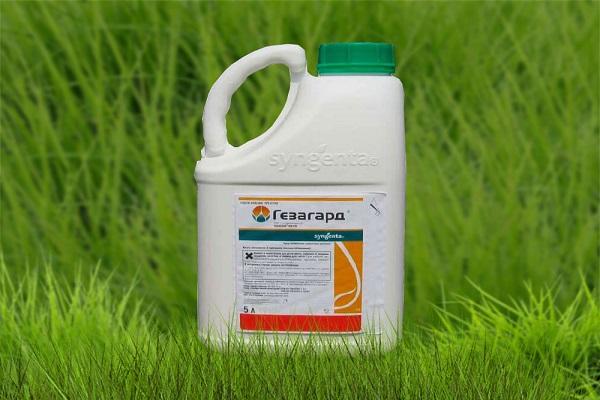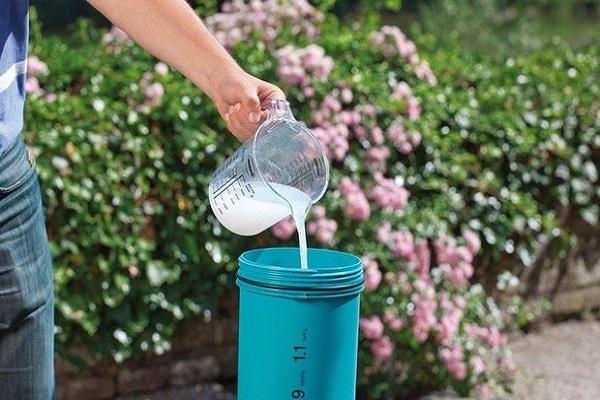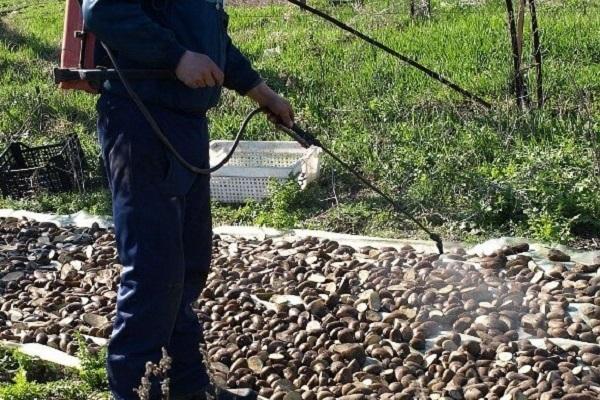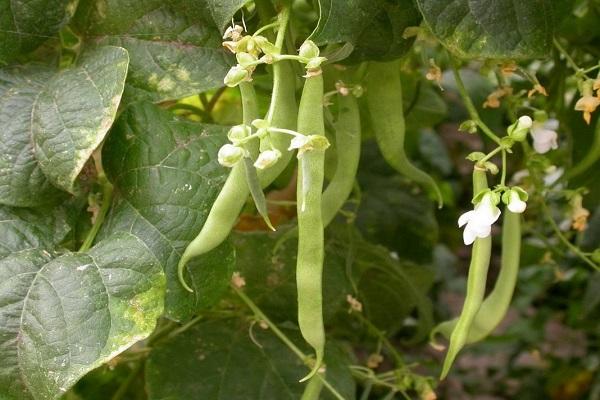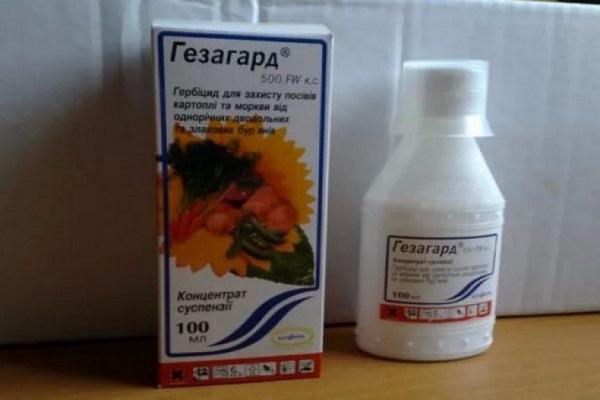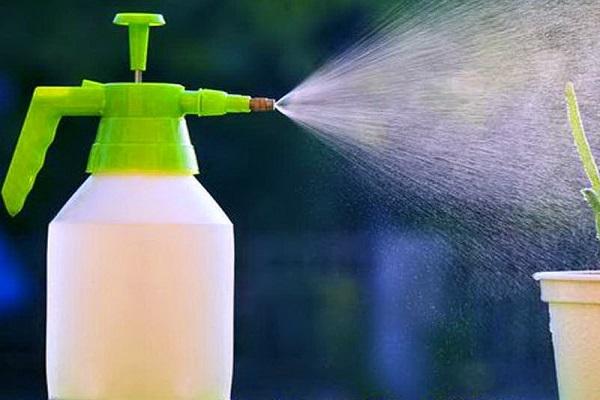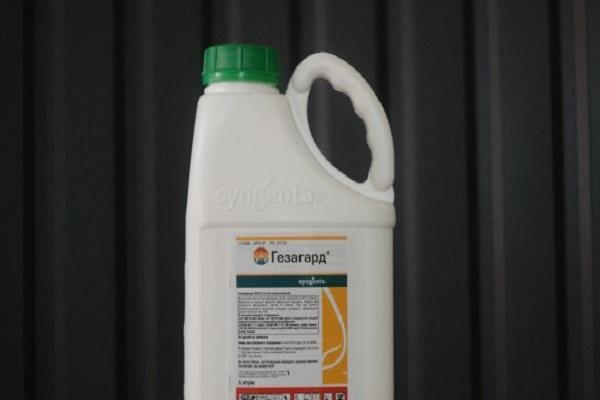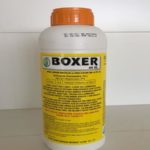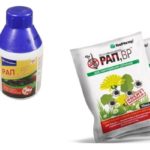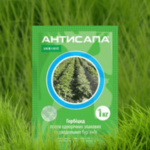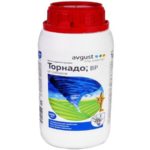The word “herbicide” takes its roots from the Latin words: “gerba” - grass and “cide” - destruction. Gesagard herbicide, instructions for use of which can be found below, was created to kill weeds. It is divided into two types: continuous action (killing all types of weeds) and selective (selective - affecting one type of vegetation).
- Composition and release form of Gesagard
- Response speed
- Pros and cons of herbicide
- How to prepare a working solution?
- Consumption rates
- For potatoes
- For carrots
- For the beans
- How to use Gesagard
- Precautions for use
- Degree of toxicity
- Compatibility with other drugs
- Storage rules and periods
- Analogues of the product
Composition and release form of Gesagard
The product is produced in the form of a suspension, poured into plastic canisters with a volume of five to two hundred liters. Often, soil herbicide is sold in small 100-300 gram bottles. Thanks to its functions, it not only destroys weeds, but also protects potatoes, carrots, beans and other useful crops.
The composition of the herbicide Gesagard includes the active substance prometrin, which controls weeds. Weeds, dicotyledonous weeds, dandelions and other weeds react with the drug and die. A liter of suspension contains half a liter of the toxic chemical prometrin.
Response speed
The response rate of the drug is quite high. If you spray the soil before sowing cultivated seeds, then weeds will completely stop growing in this area. If used after sowing, the effect of the herbicide will last from four to seven days. The leaves and roots of the weed will turn yellow, completely absorb the suspension and be destroyed by it.
Pros and cons of herbicide
The herbicide Gesagard has many advantages. These include:
- long term protection against weeds;
- Possibility of use at any temperature;
- harmlessness to people and animals;
- selective influence;
- high response speed;
- safety for cultivated plants;
- harmless to soil microflora;
- low consumption;
- acceptable price.
The drug has practically no downsides, especially if you strictly follow the instructions when using it.
It is important! The main advantage of the herbicide Gesagard is its compatibility with other chemicals. This allows you to reduce the total number of sprays.
How to prepare a working solution?
After studying the instructions, you can easily prepare a working solution.You will need clean water without impurities, silt and clay inclusions. The procedure is as follows:
- Take a container and pour half of the measured clean water into it.
- Stirring constantly, add the required amount of the drug.
- Stir the mixture thoroughly until the herbicide is completely dissolved.
- Add the rest of the water and stir again.
It is recommended to prepare a working solution for one treatment, and carry out the preparation process itself immediately before using the product.
Consumption rates
Each crop has its own application rates. The usual spray dosage is based on a liter per hectare.
For potatoes
For everyone's favorite potatoes, soil cultivation is carried out before planting the tubers, or after the first leaves of annual dicotyledonous and cereal weeds appear. For one hectare of land you will need from 200 to 300 liters of Gesagard herbicide.
For carrots
This crop also suffers from weeds such as annual dicotyledons and cereals. You will need 200-300 liters of working fluid per hectare of land. Spraying is carried out before planting tubers or after the first weeds appear. Carrots, like potatoes, can be eaten three months after spraying.
For the beans
In order for beans to grow freely without suffering from weedy annual dicotyledonous and cereal plants, they are also treated with the chemical Gesagard. You will need 200-300 liters of suspension per hectare of land. It is better to carry out the procedure two to three days before the first shoots emerge.
How to use Gesagard
To use the drug correctly, you must carefully read the instructions, since the herbicide is, in fact, a toxic chemical.The main requirement is previously well dug up and irrigated land. If at least two leaves appear on the soil, the Gesagard herbicide can be safely put into service.
Agronomists do not recommend using pesticides at high temperatures (more than thirty degrees Celsius) and at humidity levels above 60 percent. Before use, it would be a good idea to check the weather forecast, since in rainy weather the effectiveness of spraying is always minimal.
You cannot water the treated area for five days, and you are not allowed to loosen or hill up the soil near the seedlings for a month.
Precautions for use
When working with herbicide, you must follow safety precautions:
- wear closed clothes and boots;
- Cover your face with a respirator or gauze bandage to protect your respiratory system;
- put gloves on your hands to protect the skin of your hands;
- Protect your eyes with protective goggles.
If the drug does get on an open area of the body, it should be washed off with plenty of water.
Degree of toxicity
In essence, Gesagard is safe for the human body. If you strictly follow the instructions, dilute it correctly with water and do not spray it near water bodies, the degree of toxicity will be sharply reduced.
Compatibility with other drugs
The product gets along well with other drugs. You just need to follow the rules when preparing the working solution. To do this, first pour the herbicide Gesagard into the container, dilute it with the required amount of water, and only at the end add the remaining pesticides.
Storage rules and periods
The herbicide can be stored in airtight containers for three years. The temperature of the room where it is kept should not exceed plus 35 degrees.Access of children and animals to the drug is strictly prohibited.
Analogues of the product
Among the herbicides, in addition to Gesagard, some of the popular chemicals are Lontrel, Granstar, Hurricane, Bazagran. The reaction to them will appear after three or four days. Weeds in the treated area will completely disappear.

